
The 4th Fighter Group was an American element of the United States Army Air Forces (USAAF) Eighth Air Force during World War II. The group was known as the Debden Eagles because it was created from the three Eagle Squadrons of the Royal Air Force: No. 71, No. 121 Squadron RAF, and No. 133 Squadron RAF. These squadrons became the 334th, 335th, and 336th Fighter Squadrons of the 4th Fighter Group based at RAF Debden. The group was the first fighter group to fly combat missions over German airspace, the first to escort bombers over Berlin, and the first selected to escort bombers on shuttle bombing runs landing in Russia. The group was credited with shooting down 1,016 German planes.

The VIII Fighter Command was a United States Army Air Forces unit of command above the wings and below the numbered air force. Its primary mission was command of fighter operations within the Eighth Air Force. In the World War II European Theater, its primary mission was air superiority. Its last assignment was with the United States Air Forces in Europe at RAF Honington,

The 353rd Combat Training Squadron is a United States Air Force training squadron responsible for Exercise RED FLAG – ALASKA held annually in Alaska.

Royal Air Force Metfield or more simply RAF Metfield is a former Royal Air Force station located just to the southeast of the village of Metfield, Suffolk, England.
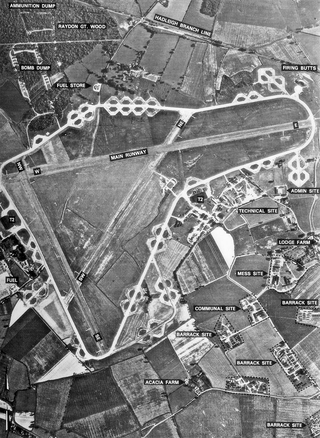
Royal Air Force Raydon or more simply RAF Raydon is a former Royal Air Force station located just to the northeast of the village of Raydon, about 6 miles (9.7 km) from Ipswich, England.

Royal Air Force Kings Cliffe or more simply RAF Kings Cliffe is a former Royal Air Force station located near Kings Cliffe, Northamptonshire, 12 miles (19 km) west of Peterborough in Cambridgeshire. The airfield was built with hard-surfaced runways and a perimeter track, these were extended early in 1943.
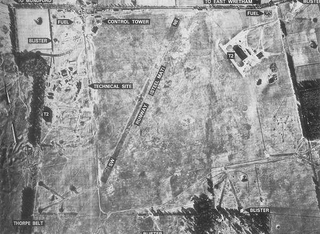
Royal Air Force East Wretham or more simply RAF East Wretham is a former Royal Air Force station located 6 miles (9.7 km) northeast of Thetford, Norfolk, England.

Royal Air Force Wormingford, or more simply RAF Wormingford, is a former Royal Air Force station located 6 miles (9.7 km) northwest of Colchester, Essex, England.
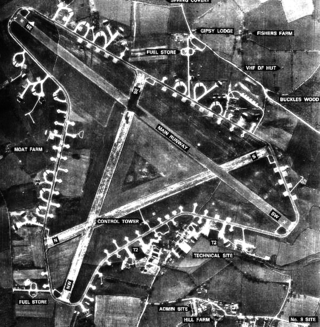
Royal Air Force Leiston or more simply RAF Leiston is a former Royal Air Force station located 1.5 km (0.93 mi) northwest of Leiston and 1 km (0.62 mi) south of Theberton, Suffolk, England.

The 357th Fighter Group was an air combat unit of the United States Army Air Forces during the Second World War. The 357th operated P-51 Mustang aircraft as part of the U.S. Eighth Air Force and its members were known unofficially as the Yoxford Boys after the village of Yoxford near their base in the UK. Its victory totals in air-to-air combat are the most of any P-51 group in the Eighth Air Force and third among all groups fighting in Europe.

The 359th Fighter Group was a United States Army Air Force fighter unit that was active during World War II. Following organization and training in the United States, the group deployed to the European Theater of Operations, operating from RAF East Wretham. The fighter group flew 346 combat missions over continental Europe and claimed 373 enemy aircraft in aerial combat and strafing attacks; probable destruction of 23; and damage to 185. It was awarded the Distinguished Unit Citation for its actions. The group flew its last mission on 20 April 1945, then returned to the United States for inactivation.

The 434th Flying Training Squadron is part of the 47th Flying Training Wing based at Laughlin Air Force Base, Texas. It operates Beechcraft T-6 Texan II aircraft conducting flight training.
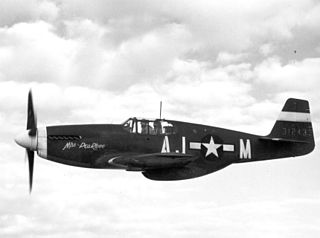
The 354th Fighter Group was an element of the United States Army Air Forces (USAAF) Ninth Air Force during World War II. The unit was known as the Pioneer Mustang Group and was the first to fly the P-51B Mustang in combat. The group served as bomber escort in the European theater of operations until D-Day, then moved to France to support the drive to Germany.
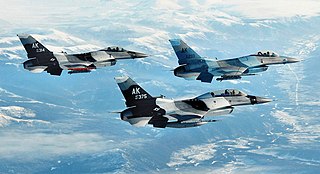
The 354th Operations Group is a component of the 354th Fighter Wing, assigned to the United States Air Force Pacific Air Forces. The group is stationed at Eielson Air Force Base, Alaska.

The 339th Fighter Group was a unit of the United States Air Forces during World War II. It comprised the 503rd, 504th, and 505th Fighter Squadrons.
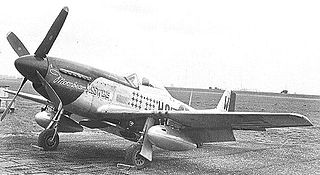
The 487th Fighter Squadron is an inactive United States Air Force unit. It activated during World War II and was assigned to the 352nd Fighter Group of VIII Fighter Command. After training in the United States, it deployed to the European Theater of Operations, where it earned two Distinguished Unit Citations and a French Croix de Guerre with Palm for its combat actions. Following V-E Day, it returned to the United States and was inactivated at the port of embarkation, Camp Kilmer, New Jersey, on 9 November 1945.

The 383d Fighter Squadron is an active United States Air Force unit assigned to the 495th Fighter Group. It is stationed at Buckley Space Force Base, Colorado, where it is an active duty associate unit of the 120th Fighter Squadron.

The 486th Fighter Squadron is an inactive United States Air Force unit. It activated during World War II and was assigned to the 352nd Fighter Group of VIII Fighter Command. After training in the United States, it deployed to the European Theater of Operations, where it earned a Distinguished Unit Citation and a French Croix de Guerre with Palm for its combat actions. Following V-E Day, it returned to the United States and was inactivated at the port of embarkation, Camp Kilmer, New Jersey, on 9 November 1945.
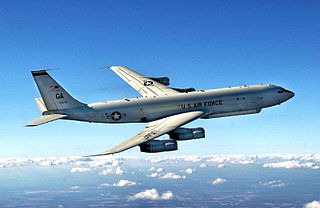
The 116th Operations Group is a Georgia Air National Guard unit assigned to the 116th Air Control Wing. The unit is stationed at Robins Air Force Base, Georgia. The 116th Group controls all operational Northrop Grumman E-8C Joint STARS aircraft of the 116th Air Control Wing. It was activated in 1992, when the Air Force implemented the Objective Wing organization, and was successively equipped with the McDonnell Douglas F-15 Eagle and the Rockwell B-1 Lancer before converting to the E-8C in 2002.

Glenn Emile Duncan was a career officer in the United States Air Force and one of the leading aces of Eighth Air Force in World War II in Europe and the top ace of the 353rd Fighter Group. Duncan was credited with 19.5 victories, one probable victory, and seven damaged German aircraft. He also destroyed at least nine enemy aircraft on the ground, while flying P-47 Thunderbolts with the 353rd Fighter Group. He flew combat missions in the P-47 Thunderbolts and P-51 Mustangs in Europe.
























